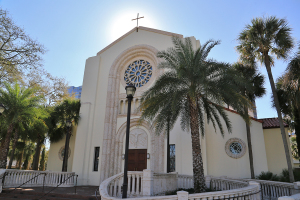Survey: Why Some Churches Thrive and Others Decline
Why do some congregations in America grow and others decline? A recent survey measured several key factors on what's causing churches to thrive and others to remain stunted.
Congregations that are willing to change to meet new challenges experience greater growth than those less up to the challenge. According to the Faith Communities Today 2005 survey, 46 percent of congregations that said they "strongly agree" with willing to change experienced the highest level of attendance growth. Among those that said they "somewhat agree," 37 percent are growing strongly. And among those who disagree on any level, only 15 percent have the highest level of attendance growth.
Geographic communities also affect congregational growth. Congregations located in newer suburbs are more likely to experience growth than congregations in any other type of location. The second best area for growth is in the downtown or central city of metropolitan areas. Those in rural areas and small towns are least likely to grow.
The composition of the congregation plays a major role in church growth as well. Congregations that are most likely to grow are younger ones, consisting of those founded from 1975 to the present. The survey revealed that the older the congregation is, the least likely it is to experience growth. Additionally, the more older adults a congregation has, the more unlikely it is to grow. And a larger proportion of younger adults also lead to growth opportunities.
"The mere presence of older adults is not problematic in and of itself," the report stated. "But a congregation where a large proportion of the members are older tends to have a cluster of characteristics that inhibit growth."
Such characteristics include no children being born to members, a lack of a clear sense of mission and purpose and a lack of vibrant worship or involvement in recruitment.
Another composition makeup affecting growth is racial diversity. Congregations that are multiracial are most likely to have experienced strong growth in worship attendance. Congregations least likely to grow are predominantly white, non-Hispanic ones.
The survey further found that a higher proportion of women in the congregation is associated with decline rather than growth in the church. Congregations that are able to attract larger proportions of men are more likely to grow.
Declining attendance numbers among mainline denominations is nothing new. But the study noted a surprising finding – a lack of growth among Catholic congregations despite continued increases in the overall Catholic population.
While some say theological differences account for the declining attendance in mainline churches compared to evangelical churches, the survey found that there is very little relationship between growth and theological orientation.
Less conservative churches are also most likely to grow.
"More important than theological orientation is the religious character of the congregation and clarity of mission and purpose," the survey highlighted. "Growing churches are clear about why they exist and about what they are to be doing."
Spiritual vitality is also key to growth with 45 percent of congregations that "strongly agree" with being spiritually vital and alive experiencing growth compared to 15 percent who "strongly disagree to unsure."
Additionally, the character of worship largely affects growth. Congregations that describe their worship as "joyful" is more likely to experience substantial growth. At the same time, those that described their worship as "reverent" were more likely to decline. And churches that more often use drums in their worship services have experienced substantial growth from 2000 to 2005. That also applied to the use of electric guitars.
Furthermore, the study found that institutional change including change in worship services is necessary for a congregation to adapt to a changing environment.
Other factors for substantial growth are developing recruitment plans, church members actively involved in recruiting new members, maintaining a website, having support groups, conducting follow-up with visitors, and being in excellent financial shape.
Results from the survey are based on 884 randomly sampled congregations of all faith traditions in the United States. The survey is the latest in the series of trend-tracking national surveys of U.S. congregations sponsored by the Cooperative Congregational Studies Partnership.




























